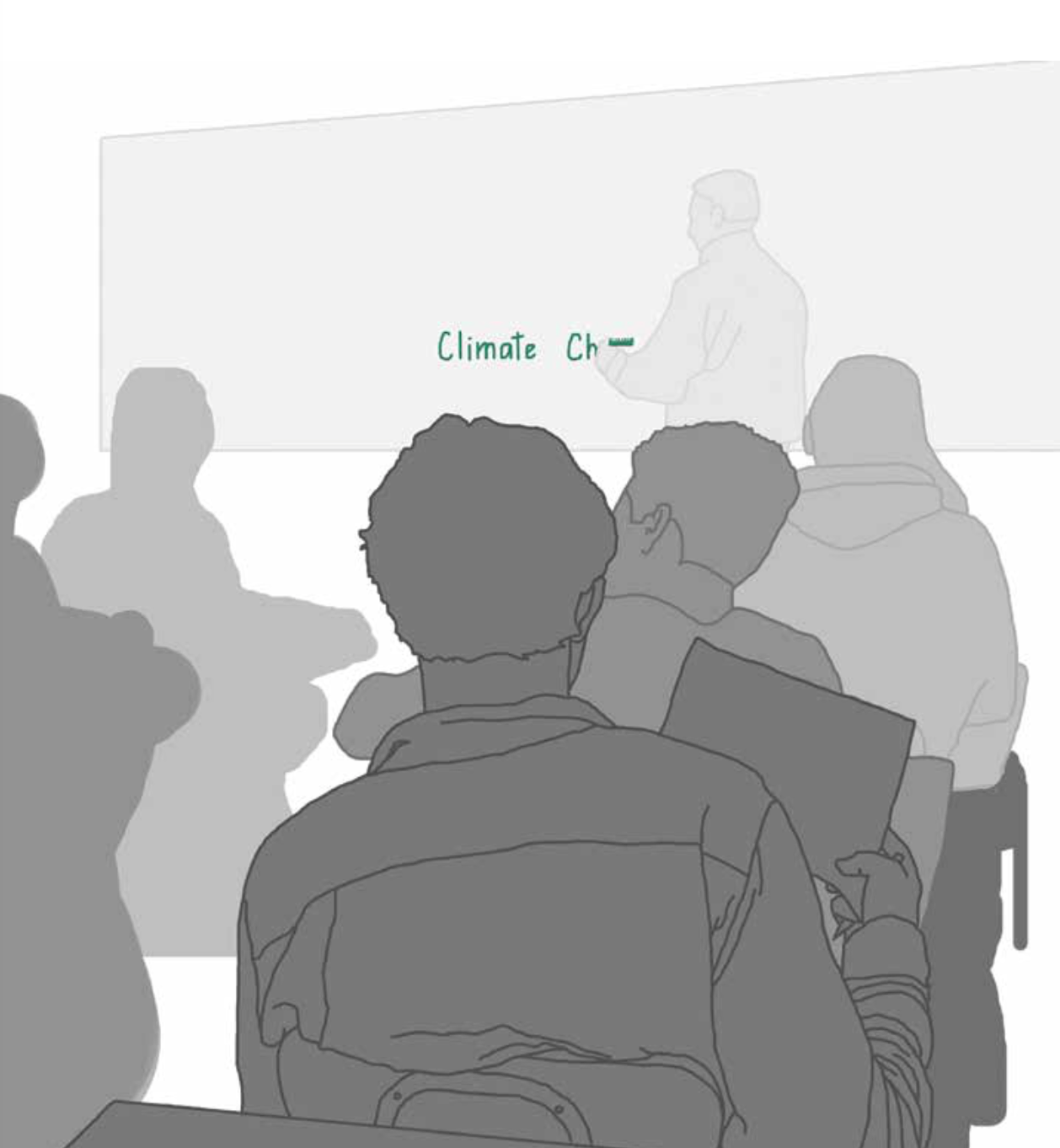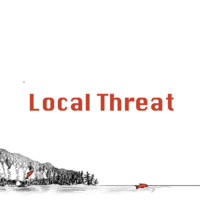
Makayla Flannagan sits in her fourth-grade classroom in Sterret, Alabama, her head spinning with new information. Her teacher stands at the front of the class and tells her students that the greenhouse effect is “made up”.
“(It was) the first time I ever learned or heard about the word global warming,” Flannagan says. “My teacher stood up, and she talked about how we shouldn’t be taught that … global warming is a thing.”
This first experience was upsetting for Flannagan. Confused by conflicting information, she conducted research on her own, reading articles by NASA and other news sources, all of which told her the same thing: climate change is real. “I had all these mixed emotions, and I was always having to turn to the internet for information,” she says. She felt isolated by her teachers, peers and neighbors who did not believe in climate change.
In the middle of sixth grade, Flannagan’s family moved back to Oregon, where she lived for the first few years of her life. “When I came back to Portland, it was like everything made sense to me,” she says. “I (didn’t) have to hide everything that I agree(d) with.” She also began to learn about climate change from her teachers, with facts that corresponded with her own beliefs.
These different teaching styles in schools between Alabama to Oregon shaped the way Flannagan viewed education, and helped her to recognize that not all students have the same opportunities to learn about climate change. “Some of the kids that live (in Alabama), they’ve been taught all their life (that), like, it’s not real, it’s not something we’ll worry about, and … it’s not going to affect us … but it’s just … how they were raised,” she says.
Flannagan’s contrasting experiences between the two states can be primarily attributed to her educators. The majority of teachers in the United States do not teach students about climate change. According to a 2018 survey done by NPR in collaboration with Ipsos, a marketing research company, only 42 percent of teachers educate students about the subject, even though 86 percent believe that it should be taught in schools.

But in Portland, this narrative is changing, driven by student activism and demands.
On May 17, 2016, the Portland Public School (PPS) Board of Education passed Resolution 5272, the first climate justice education measure in the United States.
The measure advocated for the expansion of climate curriculum, aiming to increase students’ knowledge about the subject. It called for the removal of textbooks that inaccurately portray climate change, as well as an expansion of professional development and resources for teachers.
In the 2019-2020 PPS budget for climate change education, $40,000 was allocated to teacher professional development. The money is being used to further educate teachers on climate change.
While the district supported the implementation of the Resolution, progress was stagnant for two and a half years. Without a strategy to help teachers develop and roll out the curriculum, many students around the district were left without the comprehensive climate justice education outlined in the measure.
“As slow as it’s been and as frustrating as it’s been, there’s also forward momentum,” says Tim Swinehart, a teacher at Lincoln High School and a member of the Climate Justice Committee (CJC).
Portland has become a catalyst for efforts to educate students about climate change. Since the passage of Portland’s measure, more than 40 schools around the country have adopted resolutions to educate about climate change, according to Education Source.
Most of these schools are located in the Pacific Northwest, where the existence of climate change is rarely debated. But in more conservative communities, these climate change education policies are controversial.
The controversy regarding climate education policies was illustrated on the national scale in 2016, when news reports emerged in critique of the measure from right-wing media and political commentators like Jesse Waters.
On Fox News, during a May 23, 2016 segment of Outnumbered — a daytime talk show — Waters said, “One city school district (PPS) is closing the book on any materials in the classroom that question or deny climate change. What is wrong with encouraging dialogue, questioning, intellect? People don’t know how to disagree in this country anymore, and we’re not teaching kids to know how to do that either.”
While Waters saw climate curriculum as a removal of the opportunity for discourse, the Resolution outlined that the district hoped to teach students “in ways that are participatory, imaginative, and respectful of students’ and teachers’ creativity … and that build a sense of personal efficacy and empowerment.”
At the front of PPS’ pursuit of climate justice was a group of teachers, retired educators and community members, who together formed the CJC. Formed three years ago, immediately after the passage of the Resolution, the committee was established to oversee the implementation process and to ensure that climate change was being taught in classrooms.
To accomplish this, the CJC aimed to provide teachers with professional development and curriculum that explore the causes and repercussions of the climate crisis. However, the CJC has found it challenging to obtain appropriate materials and curriculum to fulfill these requirements.
In April of 2017, the CJC conducted a review of 15 social studies and science textbooks for accuracy around the severity of climate change. They found that all 15 textbooks were out of compliance.
Some textbooks expressed doubt about the reality of climate change, while some lacked any information. Holt McDouglas’ Modern World History includes three paragraphs about climate change, one of which states, “Not all scientists agree with the theory of the greenhouse effect.”
“The textbooks that are produced in this country are produced by big corporations who are in business to make money,” says Bill Bigelow, a founding member of the CJC. This results in inaccurate textbooks with limited or false information about climate change.
To fill the gaps in a reputable curriculum, the CJC envisioned a grassroots process of creating and sharing ideas, in which teachers would drive the creation of new materials and work with students to test out lessons.
Educators like Bigelow and Swinehart were especially motivated to create a curriculum that would accurately portray climate change in a more hopeful light. “I hear kids saying … ‘if this is where we stop with an understanding of the science, this is incredibly depressing,’” says Swinehart.
With the new curriculum, the aim is to give students information about the causes and consequences of climate change, as well as to provide them with the opportunities and resources to advocate for change.
“Resolution 5272 acknowledges that the best response to that kind of despair is activism … it’s inviting students to think of themselves as activists, inviting them to think of themselves as people who can have efficacy in making the world a better place,” says Bigelow.
After the measure passed, with no immediate action from the district to follow through with their commitment, Swinehart was inspired to create a climate justice class at Lincoln High School for the
2016-17 school year.
The class infuses activism with climate change education, teaching the diverse history of the climate movement and relating it to current activists and struggles. In past years, the class traveled to Salem to lobby for clean air regulations and attended a Portland City Council meeting to advocate for a ban on fossil fuel infrastructure.
Students in Swinehart’s class say that it has impacted them in unexpected ways. Senior Isabel Homsi says the course has made “being an activist so much easier, like, with outlets to do things in the community … It’s … kind of changed my perspective as a student.”
Swinehart recognizes that the class is a privilege they possess because they attend Lincoln High School, the only school around the district to offer a climate justice course. “I love that this is happening at Lincoln, but why isn’t this happening at Grant? Why isn’t this happening at Roosevelt and Jefferson and Madison? You know, schools that aren’t in the same socioeconomic (status),” says Swinehart.
As one of the more economically advantaged schools in PPS, Lincoln had the support needed to create this class. Holly Rolfs, a senior at Lincoln, says, “I sometimes feel like it’s pointless because we’re not talking … to the communities that we need to be talking to and … other communities that are not as fortunate as Lincoln.”
PPS currently lacks equal climate education opportunities for all of its students, but is making an effort to change. “Working in a big system, … decision-making (is) a long process … so I think we’re moving fast for a system that has historically moved really slow,” says Garcia.
However, many students are unwilling to accept this response from district administrators like Garcia. Over time, students have grown frustrated with the slow action by the committee and PPS.
“There’s just this lack of urgency from people in elected offices … They just don’t seem to understand that this is one of the most pressing … issues of our time,” says Rolfs.
In the ensuing two years, minimal progress was made district-wide, with some professional development and workshops offered. At Madison High School, this included professional development for all staff, an “indigenous knowledge” field trip for ninth graders and a climate justice fair involving 500 students. But elsewhere in PPS, changes were minor or nonexistent.
As part of the global walkout for climate change in March 2019, students demanded that the district follow through with the promises of the Resolution. “When our students brought it up … it was a moment where we were like, ‘You’re right. We need to be leading this. There’s no reason why we all are moving slow,’” says Garcia.
In April, student leaders from across PPS sent a letter with a list of demands to the school district, which advocated for the expansion of climate curriculum to schools across the district. “Student involvement really re-energized and galvanized the system’s desire to move faster … (The) students (are) the reason why we’re moving as fast as we can,” says Garcia.
In May 2019, after students from across PPS presented a list of demands to the Board and Superintendent Guadalupe Guerrero, students held a strike at the PPS headquarters and spoke during a Board of Education meeting about the implementation of the Resolution.
Following the May strike, PPS allocated $200,000 for implementing Resolution 5272 in the 2019-2020 budget. $130,000 of this was used to hire Nichole Burg, a full-time climate change and climate justice coordinator.
Burg will be in charge of communication with community members, students and district administration, as well as the creation of a plan to implement Resolution 5272. Her administrator position is the first of its kind in the country, a position with no blueprint. Because of this, the first few months will involve getting her oriented and figuring out the next steps. Guerrero says, “I’m optimistic that we’re going to see some really concrete things materialize. I think there’s some things we’ll have to wait until next school year to start to see.”
Burg was also tasked with facilitating the planning and development of a high school climate justice course for the 2020-2021 school year. This elective course, slated to be available at all PPS high schools, would offer half of a history credit and half of a science credit. Initially set to be available in the 2019-2020 school year, the district pushed back the deadline due to inadequate resources and time.
“Any and all possibilities are on the table right now. The … unique thing about this class is that it can be whatever we want it to be … We just need to figure out how to get it together and then create something that we can scale out to everybody in the district,” says Burg.
There are also plans to integrate climate justice education into middle and elementary schools. “Our goal is that it goes all the way down … so by the time they even get to high school they’re already … well staged (to) go deep into some of these topics,” says Guerrero.
A significant focus of this new curriculum will involve going beyond the traditional scientific approach. Burg says that this will also include highlighting the experiences of frontline communities who are adversely affected by climate change. “I want to make sure that we are prioritizing the voices of people who are most marginalized,” she says. “It’s offering people all these opportunities to really … understand the depth of what’s occurring and tapping into … their humanity and helping them see that we need to work together to solve these problems.”
Burg, along with PPS, will be a leader in the creation of climate justice education. She will have an influential role in the implementation of climate change curriculum on a national and possibly global scale.
Garcia says, “We are the first district in the country that we know of to have a position like this … we’re positioned to lead the nation in this conversation, ” he says. “I think we owe that … to the students … (who) have been the ones demanding and calling us to account.”
Despite a continued effort to implement the measure, much work remains for the curriculum to reach students around the district. With a new coordinator taking on the sizeable task of carrying out the promises of the Resolution to the over 49,000 students across the district, and with an implementation plan still in the works, it will take time for Resolution 5272 to fulfill its promises.
“I would say, stay tuned because we all want to see a concrete road map for how this plays out over the next six months and the year,” says Guerrero.
While the implementation process has been tumultuous at times, many are optimistic about the future of climate justice curriculum at PPS.
“We just have to keep pushing forward because if we’re not giving this our all, then everything else that we’re fighting for doesn’t really matter,” says Rolfs.




